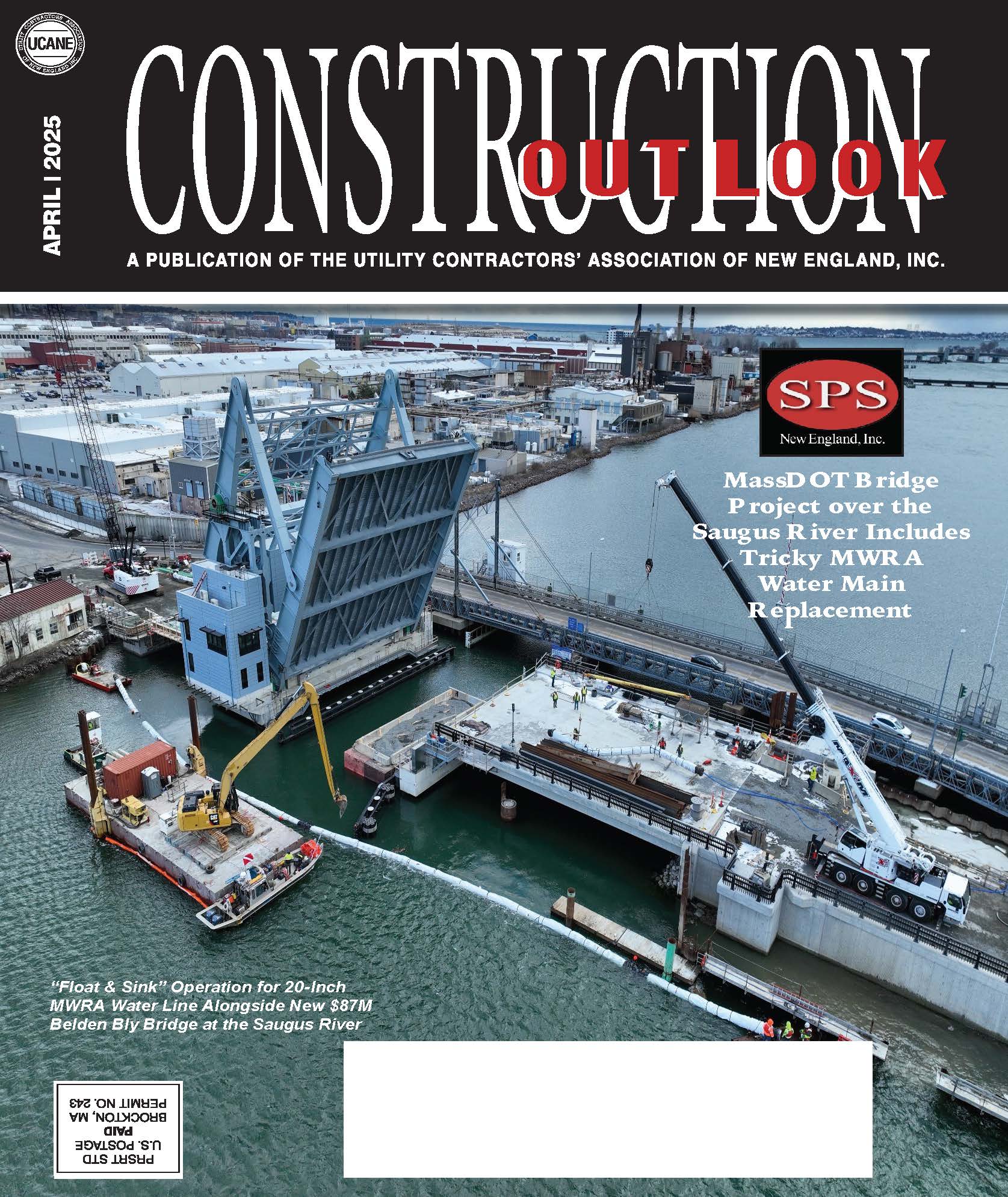From UCANE’s Construction Outlook Magazine | April 2025 Issue
“UCANE Contractor SPS New England floats 350 feet of 20-inch ductile iron pipe across tidal river before sinking it into a trench below river bottom.”
The SPS Story
Based in Salisbury, MA, SPS New England, Inc. recently celebrated their 40th Anniversary in 2024. From a small family business, the company has steadily grown into one of the most successful and dependable public works contractors in the Northeast when it comes to highway, transit, marine, and bridge work.
The Capolupo family – siblings Wayne, Phil, and Karen started SPS with a simple philosophy…offer the customer quality workmanship at competitive prices while completing projects both on-time and safely. Company integrity was also very important from the beginning, and SPS was a sought-after employer where construction professionals and craftsmen alike knew their work would be respected and recognized by the company ownership.
In the early years SPS bid mostly on small municipal road jobs running with about 20 employees. According to company CEO Wayne Capolupo, “Much of our early work was done as subcontract work, but it wasn’t long before our expertise in building formwork and pouring concrete walls and structures was making us stand out, and we wanted to perform as a GC.”
The company’s first prequalification from MassDOT was received in 1988, which allowed them to bid up to $1.0M on road and bridge work. Throughout the 1990s the company grew at a manageable pace and could be seen doing roadwork and bridge deck rehab work throughout Massachusetts, New Hampshire, and Maine. By 2000 SPS had grown to 50 employees and was doing a volume of about $20M per year.

